
TARGET 151202
CLEANING A LOCK
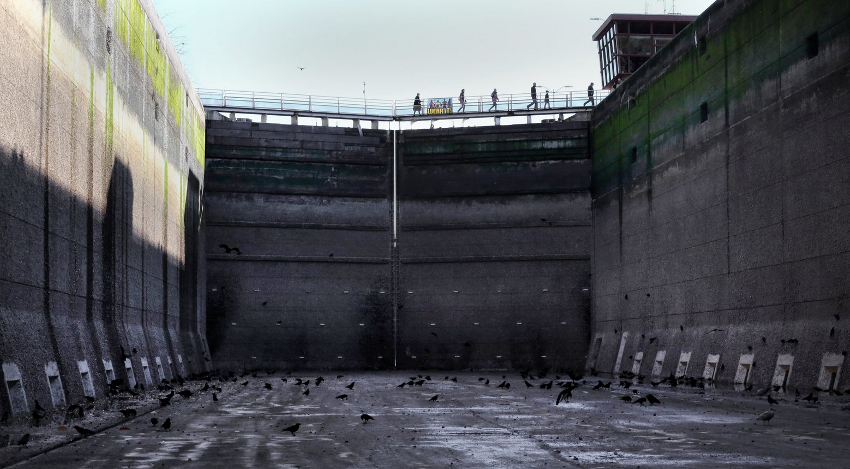
Every November the large lock at the Hiram M. Chittenden Locks in Ballard, Washingon, U.S.A. is emptied for maintenance.
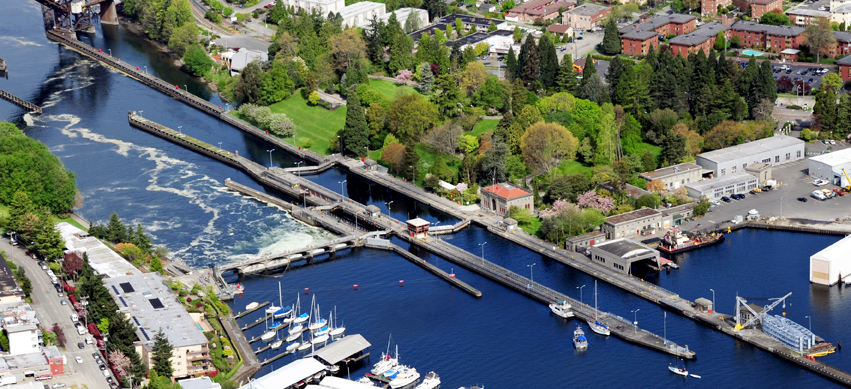
An aerial view
The large lock is the rectangular area shown in the picture, above. The lock is there to connect the fresh waters of Lake Washington, Lake Union, and Salmon Bay to the tidal waters of Puget Sound. It allows both recreational and commercial vessels to travel from the salty sea waters to the docks and warehouses of Seattle's busy fresh water harbor.
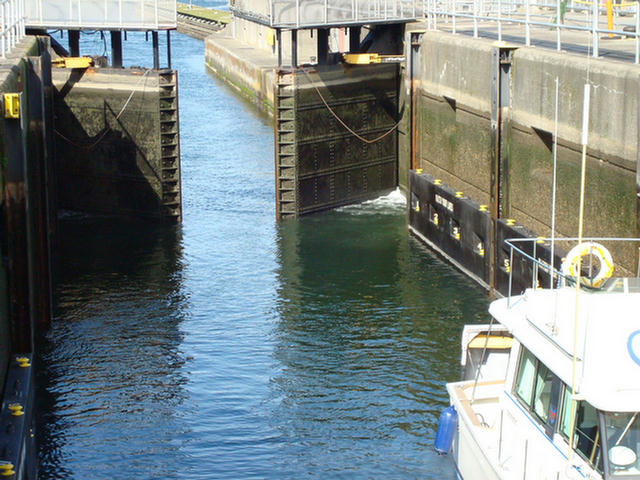
An average day in the lock
On an average day, the massive doors on one end will open to allow one or more ships to enter. That door will then seal and the doors on the other end will open, allowing the ships to exit.
Since the river is dammed, the water level of the river is 26 feet higher than the average (tides) level of the sea. If the ships are coming into harbor, they enter from sea level, the doors on the seaward side are closed, and water from the river is gently allowed to flow in, raising the boats to the level of the river. Then the doors on the river side are opened allowing the boats to enter towards the port.
If the ships are going from the river out to sea, the doors on the riverside are opened for the ships to enter, then closed. The water in the lock is then allowed to flow seaward until the boats are gently lowered to sea level. Then the seaward doors are opened and the ships can progress out to sea. In this way, the salty waters and varying heights of the sea's tides are kept from the fresh waters of the port, but traffic is allowed between the two.
The process takes between 10 and 15 minutes, depending on the tidal level of the sea. Boats as large as 760 feet in length and as small as a kayak can travel through the locks.
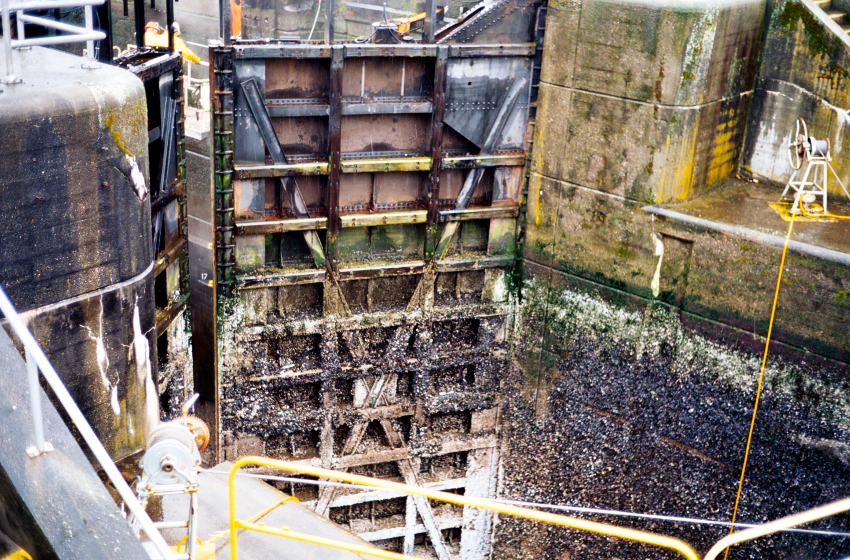
A year's worth of crud has collected
But over time, it gets dirty and crusted with barnacles and seaweed and needs to be cleaned.
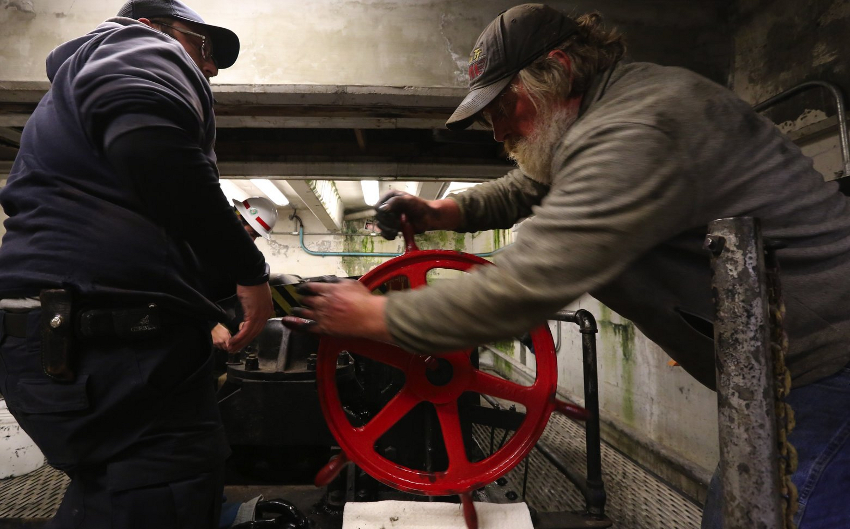
Turning on the pumps...

...and draining the water out.
So, once a year, in November, when the salmon aren't running and there is less water traffic, the doors on both ends of the lock are sealed and the 25 million gallons (94.635.294,6 liters) of water in the lock is pumped out. The lock is 825 feet (251.5 meters) long and 80 feet (24.4 meters) wide.
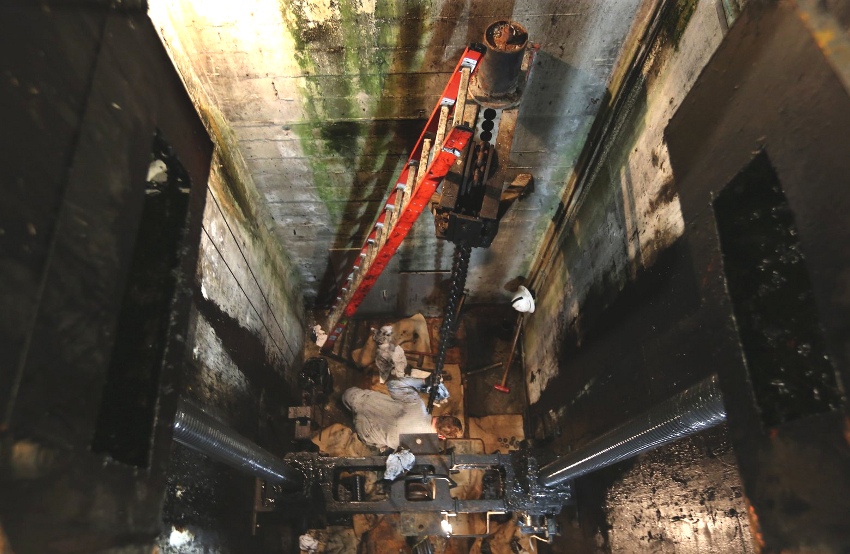
Then, the worken climb down into the lock.

They survey what has to be done.
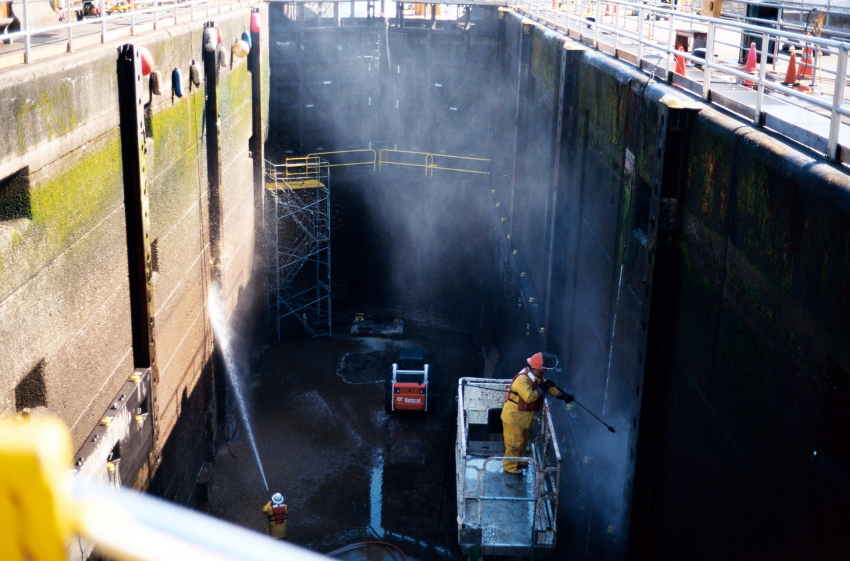
And the cleaning begins.
Once the cleaning has finished, the a full inspection is given to every nook and cranny of the facility,
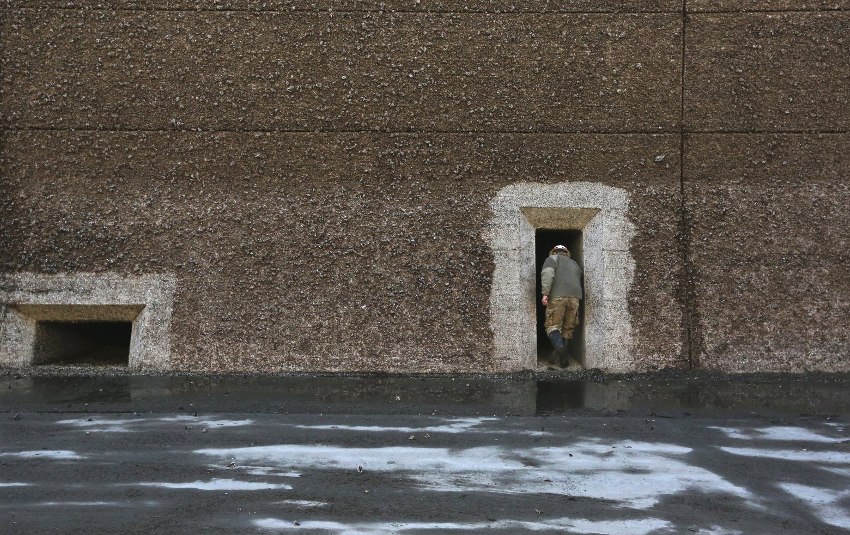
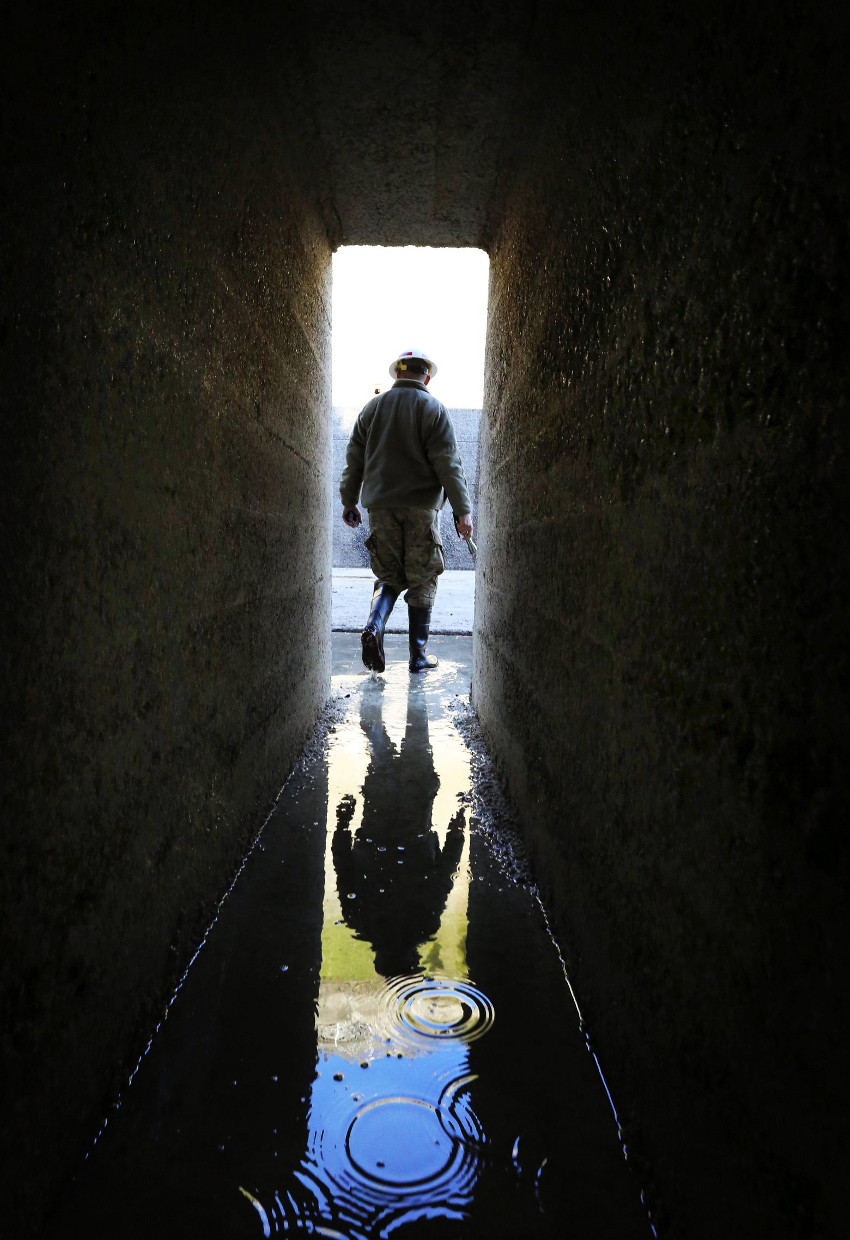
both inside
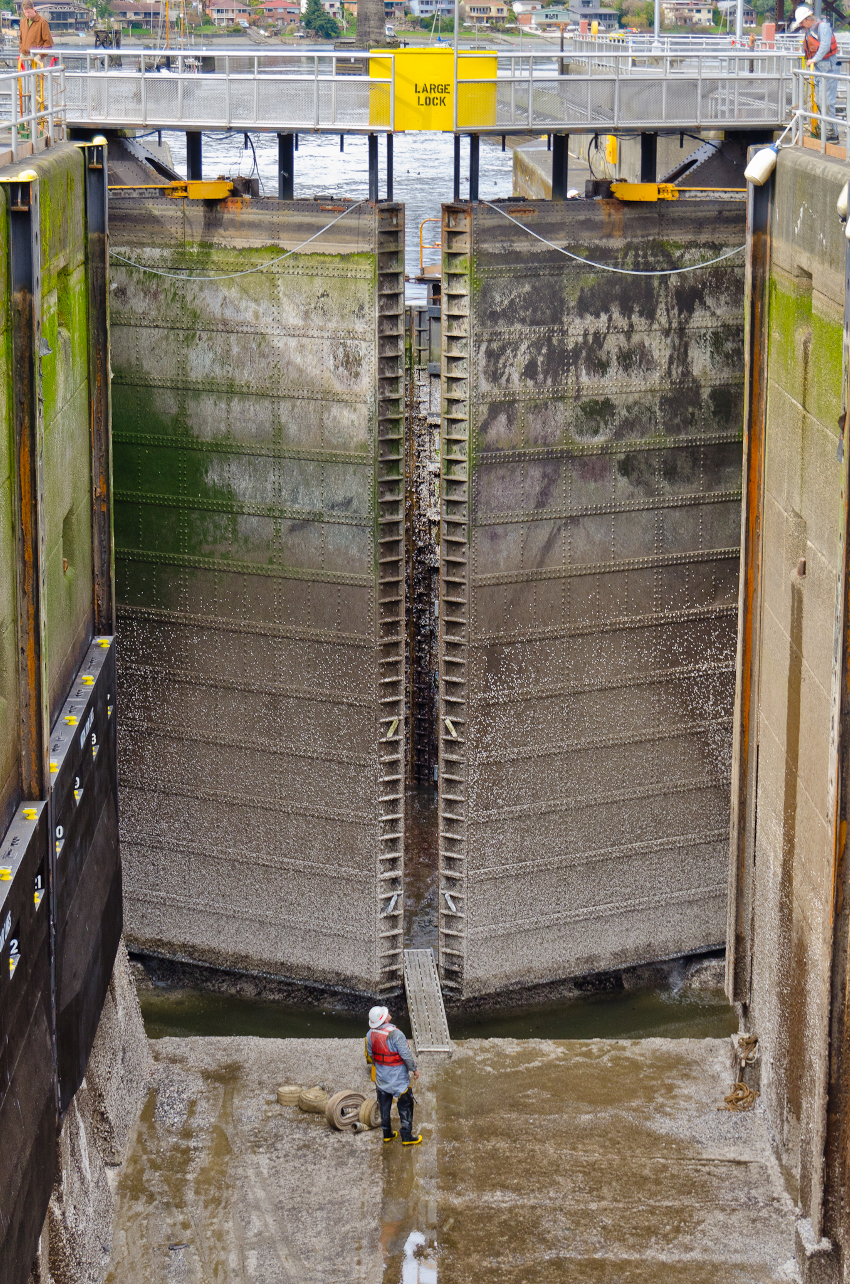
and out.
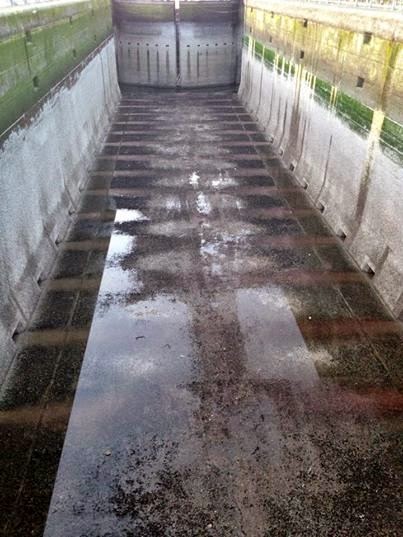
A fully cleaned, inspected, and approved lock.
When the lock is cleaned, inspected and approved, there is no need to pump water back in. All they need to do now is to open the doors at one end and the surrounding water will fill the lock again in a matter of minutes.

Back in operation
Then, the lock is ready for another year's use to water traffic coming to and going from Seattle's fresh water port.
The locks and the associated spillway, flood control apparati and fish ladder were built by the U.S. Army Corps of Engineers and opened on July 4, 1917.FEEDBACK MAP
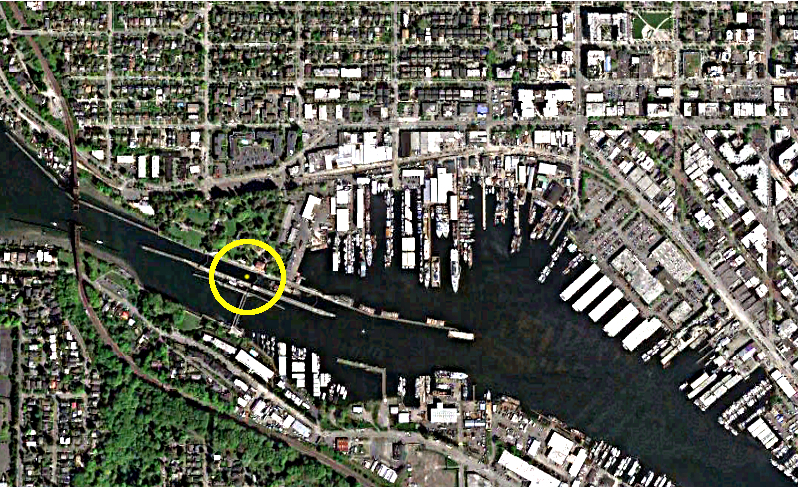
If you got impressions for which this feedback is insufficient, more information,
pictures and videos can be found at the following web sites:
The Seattle Times
U.S. Army Corps of Engineers website
Yelp.com (300+ feedback pictures of the lock facility)
My Ballard web site
Many thanks to Gail Husick for providing this target.